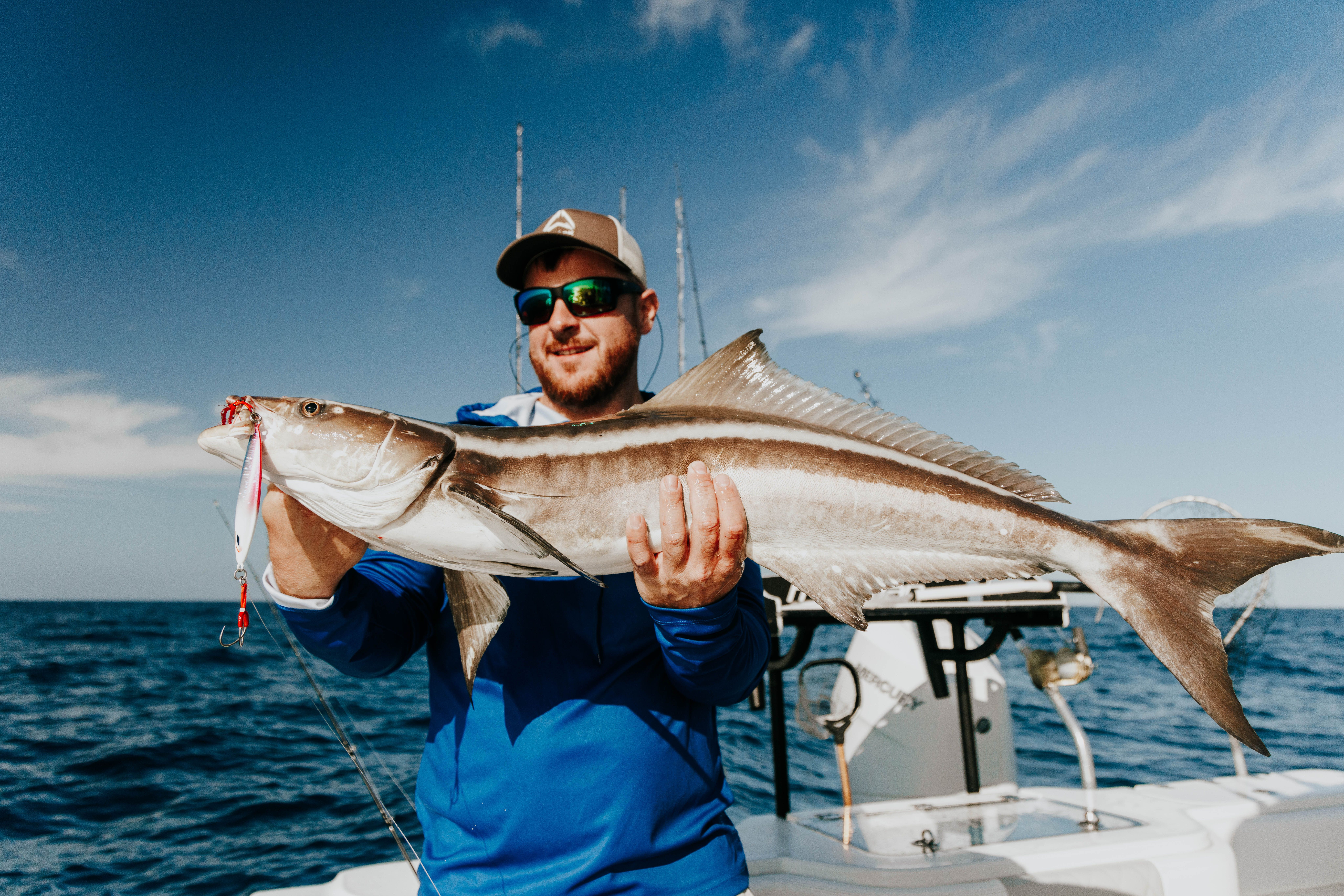Battling The Brown Bombers

When you combine brute strength, endurance, and an apparent eagerness to bite, you get a top-tier sport fish species. Add in what is, without question, some of the tastiest filets the sea has to offer and you have something special — something like the cobia.
Ranging from nearshore flats to offshore reefs, these fish are distinguished by a flattened head, wide, toothless mouth, a prominent dorsal fin (often mistaken for a shark), and a broad, powerful tail built for extended battles. The upper portion is typically dark brown, with the sides marked with lighter horizontal stripes.
What’s interesting about cobia is their diverse habitat usage. Kayak, flats boat, center console, no boat — everyone can play this game.
- Riding the Rays: Shallow water anglers seeking trout, redfish, and snook often spot cobia shadowing stingrays. As the ray forages along the bottom, crabs, shrimp, and baitfish often scoot out from the wingspan. Opportunistic cobia are typically quick to capitalize.
- Food Courts: Wrecks, reefs, rock piles, piers, and bridges all gather an array of forage and, therefore, regularly attract cobia. Land-bound anglers should fish their perimeters, as well as directly below the fishing structure.
- On the Edge: Channel markers present a cobia favorite, as bait schools often gather around these navigational aids. You’ll often find cobia circling the structures, so position for a leading cast. Get your bait in front of a cobia and it’s typically a quick response.
- Curious Types: Many are the tales of bottom fishermen anchored on a hard bottom site who suddenly spot a brown figure circling ever closer. For whatever reason, cobia will literally walk right up to a stationary boat, perhaps treating it like a large piece of food-sheltering flotsam.
Quick response generally ensures a guaranteed hookup.
Appropriate Arsenal
- Cobia aren’t hard to please, so live sardines, pinfish or jumbo shrimp offer dependable shallow water options. Rig your livies on a Mustad Demon Perfect Inline Circle Hook and free line, or float your bait to the fish.
- For deeper spots, drop your baits on a fish finder rig with a slip sinker positioned above a Mustad Round Eye Rolling Swivel, connecting your main line to a 3-foot fluorocarbon leader tied to a Mustad Demon Perfect Inline Circle Hook. For impromptu sight casting opportunities, keep an unweighted live bait on standby.
- On the artificial side, cobia shadowing rays or free-swimming shallow flats respond aggressively to soft plastic jerkbaits on 3/16- to 1/4-ounce Mustad Shad/Darter Jig Heads, as well as LIVETARGET Fleeing Shrimp. Lead your target to avoid spooking a ray or the escorting cobia and hop the bait as your fish approaches to simulate a baitfish or crustacean fleeing the predator.
- For deeper water scenarios, a swimbait offers a good tool for covering water and “prospecting” for unseen fish, or targeting cobia that keep their distance. LIVETARGET offers a line of realistic baitfish-mimicking swimbaits, with the sardine, pinfish, and mullet options topping the list.
- Cobia also respond well to large profile jigs like the Mustad Big Eye Bucktail Jig, dressed with a curly tail grub. Cast and retrieve across your target site, or vertically drop and jig the bait for fish you spot on the electronics.
Wherever and however you entice a cobia, settle in for a serious battle. These fish bring impressive endurance, but steady rod pressure will wear them down. Fight the good fight, and if season and size limits allow, you’ll enjoy an unforgettable fresh fish dinner.